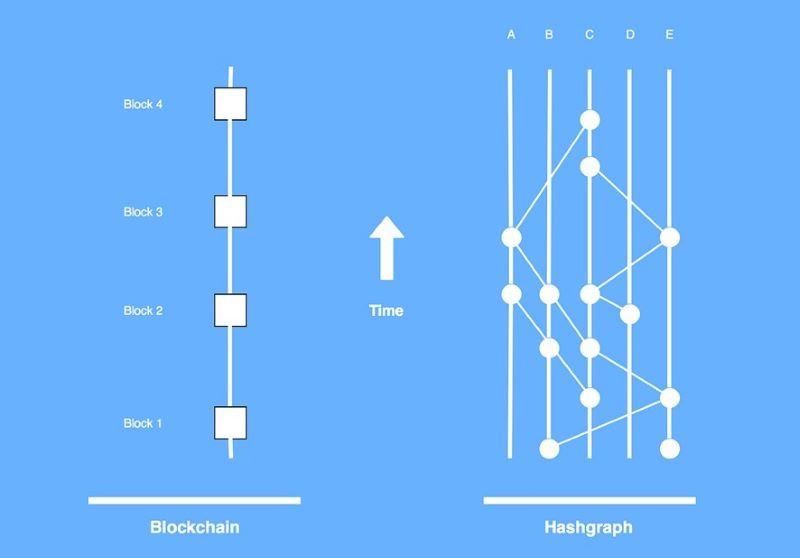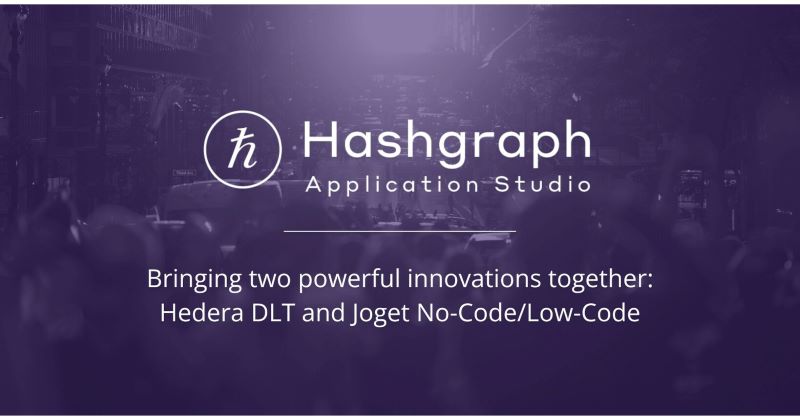Imagine a world where online trust isn’t just a hope, it’s a given. That’s where what is hashgraph consensus in blockchain steps in, promising a future with quicker, fairer, and more secure online dealings. But what is this tech wonder? Let’s break it down. It tosses out blockchain’s old ways, using its gossip about gossip and virtual voting to reach quicker and safer consensus. Ready to dive deep into this tech game changer? Keep reading, and I’ll guide you through the nuts and bolts of hashgraph, pit it head-to-head with blockchain, and explore its shiny benefits. We’ll also get real about how it’s shaping networks today and what it holds for tomorrow. Let’s get this show on the road and uncover why hashgraph might just be the heir to blockchain’s throne.
Decoding Hashgraph: Beyond Blockchain
Understanding the Mechanics of Hashgraph Technology
Let’s dive into hashgraph. It’s a new kind of data system. It’s like a diary that talks! This diary keeps a record of who said what and when. It’s a smart way to agree on data. This is how Hedera Hashgraph keeps track of deals and info. It’s different from usual blockchains.
Hedera Hashgraph uses gossip to spread info. Picture kids whispering in class. They gossip, right? Hedera’s gossip is about digital messages, not rumors. It’s about computers sharing what they know.

Imagine a game of telephone, where the message hops from friend to friend. That’s how gossip moves in hashgraph. Data zips fast from one computer to another. Each computer saves a tiny piece of the whole story. They mix all the pieces to see the full picture. It’s called the Gossip about Gossip protocol.
There’s also a smart way to make choices in hashgraph. It’s named virtual voting. Computers don’t really vote like we do. They just know enough gossip to guess the vote. It works without a real vote! It’s how they agree without talking direct.
Hashgraph vs Blockchain: A Comparative Analysis
Now let’s match hashgraph with regular blockchains. Imagine blockchains like trains on tracks. Each car hooks to the last. That’s how blockchain pieces stay together. But, trains can only go one way, straight.
Hashgraph is like a web more than a train. It spreads wide. So, it can move faster. It’s like a smart net, not just straight lines. It doesn’t block off steps like blockchains do. This makes hashgraph quick. Quick speed means you wait less for stuff to happen.
With blockchain, every block counts. It’s a slow pick. But, with hashgraph, no blocks! Instead, we use that gossip to choose. This skips waiting for new blocks. We don’t waste time. It lowers fees too.
Hashgraphs are tight on rules. They make sure no one can trick the system. This is called asynchronous Byzantine Fault Tolerance. It’s a fancy term. But it just means it’s tough for hackers.
Think about two towns. One has many roads – that’s hashgraph. One has just one road – that’s blockchain. More roads mean cars spread out. They avoid jams. That’s why Hedera Hashgraph can handle lots of deals quick. It gets more done at once.
Blockchain is cool, but think bigger. Hashgraph offers speed, low costs, and safety. It’s a strong choice for our digital world. And it’s all run by a group who check on quality and fairness.
So, that’s how hashgraph works. It chats like gossip and makes quick, smart choices. It’s a fresh way to share and agree on data. It could shape our tech future!
How Hashgraph Achieves Consensus: Gossip about Gossip and Virtual Voting
Gossip about Gossip Protocol Explained
You’ve heard of blockchain, right? Now, let’s chat about hashgraph. Hashgraph turns heads with how it shares info. It talks through “Gossip about Gossip”. This means every node chats with others, sharing what it knows. It’s like a game of telephone but smarter. Each node gossips not just the latest news but also all it heard before. This builds a web of who said what and when.
This gossip forms a picture, a directed acyclic graph (DAG). It tells the tale of each piece of data’s journey through the network. Imagine a family tree but for data. This way, the whole history is there for all to see. It’s not just messages passed around. It’s stories within stories.
In this chatter, no leader is picked. No miner does heavy lifting, like in Bitcoin. Every member of this network helps. This is unlike public blockchain. It aims for all to have a say. No one waits for their turn to speak. A fast, fair chat room, if you will.
As nodes natter away, this protocol lays the groundwork for trust. Fairness comes first. Fairness in speed and in chances to speak or share data.
Virtual Voting Algorithm: How it Secures Hashgraph
Now, for the clever bit – virtual voting. Remember the gossip we talked about? It’s not just idle chat. Each node uses it to vote, without real voting. It sounds wild, right? Here’s how.
Thanks to the gossip, each node knows what all other nodes know. Because of this, they guess how others would vote. They do this without an actual ballot. It’s like knowing your friends so well, you vote for them. This clever trick is called virtual voting.
Why do this? It makes things secure. Super secure, in fact.
This trick comes from something deep and brainy called asynchronous Byzantine Fault Tolerance (aBFT). It’s tech talk for “even if some nodes are naughty, we’re still safe.” It means even if some nodes fail or act badly, our data’s okay. The honest nodes reach an agreement. They make sure what’s true stays true. This is big for things like hashgraph cryptocurrency or smart contracts.

For you, this means a network that’s not just quick, but also strong. It keeps your stuff safe while it zips around. It’s like having a superhero squad in your computer. They’re fast, they’re smart, and they’ve got your back.
Hashgraph does all this at speed, by the way. Want to know why people get excited about Hedera Hashgraph? Picture sending a text and it getting there before you hit send. That’s the kind of speed we’re eyeing.
Low hashgraph transaction fees are a cherry on top. They’re kept tiny because the system’s slick, not bulky like old blockchains.
So, there’s our deep dive into hashgraph’s cool tools to agree on data – gossip and voting. No leaders, no waiting, just chatter and clever maths. It’s a fresh slice of tech that might just be a taste of tomorrow.
The Advantages of Hashgraph for Modern Networks
Exploring the Benefits of Hashgraph’s Efficiency and Speed
Think of the last time you used the internet. You wanted it fast, right? Now, let’s talk about a way to make networks zip by even quicker. We’re diving into the world of distributed ledger technology, and, more exciting, how hashgraph technology pushes the speeds we dream about.
Imagine hashgraph like a super-efficient traffic system. But instead of cars and roads, we’ve got data zipping around. Hedera Hashgraph, a new breed of digital ledger, is like having a highway with no speed limit and no jams – that’s the hashgraph network speed for you.
Hashgraph achieves lightning-fast transactions through a unique method called Gossip about Gossip protocol. Here’s the nifty bit: each member tells two friends some news, and then they tell two friends, and so on. This keeps everyone updated super quick. But hold on, it’s not just about being fast; it’s about being smart too. Virtual voting algorithm steps in to make sure only the good transactions get a thumbs-up.
So, when comparing hashgraph vs blockchain, think speed and smarts. With lower hashgraph transaction fees, businesses can save a bundle. Plus, they can feel good about using a system that’s fair to everyone. It’s like being the coolest kid on the block but also the smartest.
Asynchronous Byzantine Fault Tolerance in Hashgraph
Now, let’s get a bit technical but stick with me; it’s cool, I promise. Asynchronous Byzantine Fault Tolerance (aBFT) is a fancy term for “super strong network guard.” It means even if some computers go rogue or get all glitchy, the network stays strong and keeps chugging along.
Hashgraph says “no thanks” to bad actors. How? It uses maths that’d make your school teacher proud. With aBFT, hashgraph checks all its work. You can trust that the information going through is spot-on because it’s the most secure way to make sure everyone follows the rules.
Leemon Baird is the brainy guy who came up with hashgraph. He made sure it was built to keep your stuff safe and be really hard to mess with. That’s big brain moves right there.

To wrap it up, hashgraph makes sure our digital world moves like a star athlete—quick on their feet and very hard to trip up. And that’s just a peek into its genius. Benefits of hashgraph? They’re huge, especially when we chat about power for our future networks. From making sure transactions are fair to keeping fees low and security high, it’s like hitting the jackpot for modern tech.
So, if you got lost in the coolness of it all, remember this: hashgraph is the high-speed, super-smart, strong-as-steel way we can share and protect our digital lives. And if you ask me, that’s just plain awesome.
Practical Applications and Future of Hashgraph Technology
Pioneering Hashgraph in Enterprise Solutions
Let’s jump right in and talk about how hashgraph gets things done in the big business world. Hashgraph is a new way to make sure all data in a network is true and agreed upon. People are always on the lookout for blockchain alternatives, and hashgraph stands out. It’s not just your average Joe at the tech party.
Imagine you run a huge company. You want to keep your info safe, fast, and clear. Hashgraph technology explained in simple terms does just this. It stores info across many computers, so no single one can mess things up. This is called distributed ledger technology, which hashgraph takes to the next level.
Instead of a chain of blocks, like in blockchain, hashgraph uses something called a directed acyclic graph (DAG). Think of it like a family tree that only goes forward in time. No loops, just straight lines of connection. This makes it really fast for all the computers (we call them nodes) to chat and agree on data without waiting in a line. They use the Gossip about Gossip protocol, which is like a super-speedy rumor mill where computers share what they know with each other.
Now, when it comes to making big choices, this is where hashgraph shines. Its virtual voting algorithm means that every node gets a say. It’s a fair game, with no one left out. This fairness is a big win for businesses. They can trust the system to treat every transaction with equal care.
Imagine sending money around like you send texts—super cheap and quick. With hashgraph’s low transaction fees and fast network speed, companies can do just that. Hashgraph can handle a huge amount of transactions in the blink of an eye. We call this high throughput. So, big companies can work faster and smarter.
Lastly, you might have heard of hackers messing up networks. Well, hashgraph’s got this covered with something called asynchronous Byzantine Fault Tolerance (aBFT). It’s the top dog of security. Even if some nodes go rogue or get hacked, the rest keep the network safe. This is peace of mind for any big company.
Hedera Hashgraph and the Evolution of Decentralized Applications
Now, let’s look ahead at Hedera Hashgraph. It’s where distributed apps (we call them dApps) are heading. Forget just sending coins around. We’re talking full-blown apps doing their magic without any central boss calling the shots.
Hedera Hashgraph is not just fast and cost-effective. It’s also about doing things in a way that all players get a fair shake. This is thanks to the hashgraph consensus mechanism. Consensus means all nodes agree, and in hashgraph’s case, they do it with style and speed.

Now you’re thinking, how about the cool stuff we use every day? Like smart contracts that sign themselves and things like IoT, which is all our gadgets talking to each other. Hashgraph can take them to the next level because it’s built to scale up without breaking a sweat.
And for those thinking about the norms and rules, hashgraph has a governance model that’s like a round-table of wisdom. It ensures that this tech is used for good. They keep an eye on the nuts and bolts and make sure everyone plays by the rules. This brings the trust we need for tomorrow’s tech today.
So, whether it’s safe, quick deals or building the future right in our apps, hashgraph is changing the game. It’s not just catching up to blockchain; in many ways, it’s leaping ahead. With this kind of tech, the future of how we connect and trade is looking bright, super-fast, and on the level. Watch this space, because hashgraph is here to stay and it’s just getting started.
We’ve dived deep into Hashgraph and seen how it’s not just another blockchain. It’s a new way to agree on what happens online, with quick chatting nodes that vote without even knowing it. This tech has some serious perks – it’s fast and it doesn’t let users mess with the system.
Hashgraph could change the game for businesses and apps. It shows us a future where sharing info is speedy and safe. This isn’t just talk; it’s happening now with Hedera Hashgraph leading the charge.
So, what’s my final take? Hashgraph tech is cool and has a lot to offer. Keep an eye on this space – it’s going places, and you won’t want to miss out!
Q&A :
What is Hashgraph Consensus in Blockchain Technology?
Hashgraph consensus is a distributed ledger technology that differs from traditional blockchain. It utilizes a consensus algorithm based on the gossip protocol and virtual voting. This method is designed to achieve fast, fair, and secure consensus without the need for proof of work or proof of stake.
How Does Hashgraph Consensus Improve on Traditional Blockchain?
Hashgraph consensus offers improvements in speed, fairness, and efficiency over blockchain. Transactions are processed in parallel rather than sequentially, which allows for higher throughput. The consensus mechanism also ensures that the order of transactions reflects the time they were received, which provides fairness.
What are the Key Benefits of Using a Hashgraph Consensus Algorithm?
The key benefits of using a Hashgraph consensus algorithm include increased scalability, faster transaction speeds, and improved security. By avoiding the need for mining, it is also more environmentally friendly than proof of work blockchains, and because it reaches consensus with fewer resources, it reduces overall costs.
Is Hashgraph Consensus More Secure Than Traditional Blockchain?
Hashgraph claims to have bank-grade security. Its consensus algorithm uses asynchronous Byzantine Fault Tolerance (aBFT), which is one of the highest standards for security in distributed systems. This makes it resilient to attacks, including DDoS, Sybil, and spoofing attacks.
Can Hashgraph Handle More Transactions Than Standard Blockchain?
Yes, Hashgraph is capable of handling a higher number of transactions per second (TPS) than most standard blockchains. This is partly because it does not require proof of work, which can slow down transaction processing, and because of its efficient consensus mechanism that enables rapid validation of transactions.
